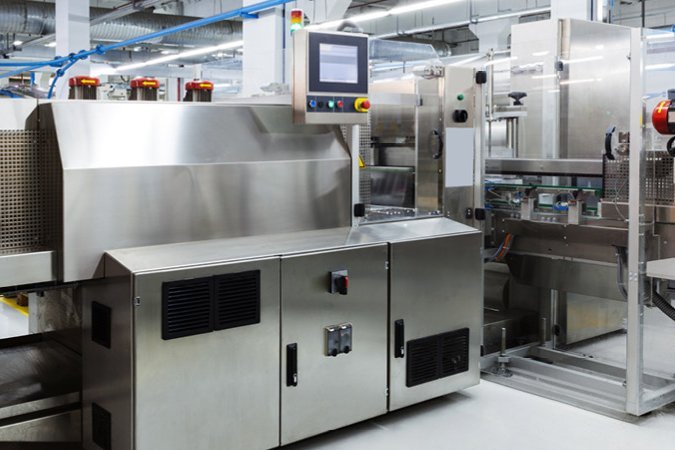The importance of pilot projects for production digitization is often underestimated. Companies often rely on think-big approaches to implement comprehensive solutions in a short period of time, whereas pilot projects offer a valuable alternative that aims at sustainable risk management, organic growth and a constructive error culture. In our blog post, we'll show you the advantages of working with pilot projects, which five pitfalls you should absolutely avoid, and what the ideal preparation looks like. Once that is sorted, you are ready to get started with production digitalization.
Why a pilot project?
A pilot project is used to carefully test and adapt new software or a new automated process in a limited and controlled environment before it is integrated in a comprehensive rollout. In production, for example, a pilot project could be the implantation of a new shop floor management system to monitor machines. Pilot projects enable factory operators to evaluate the feasibility, functionality and performance of software or a process, to minimize the risk of failures and to create the basis for continuous improvement and innovation.
The advantages of pilot projects in digitalization
There are many advantages of using pilot projects for the digital transformation of production scenarios. The key concept lies in the deliberate limitation of project size and focus to gain knowledge before making production-wide decisions based on real data.
- Minimizing risk: With pilot projects, companies identify potential risks at an early stage and can assess them before investing on a large scale. This reduces the risk of expensive bad investments and makes it easier to gradually introduce new solutions.
- Gaining experience: Engineers and machine operators often work closely together on pilot projects and as a result gather valuable insights while at the same time deepening their understanding of the software solution. Findings that can optimize the way software is used are particularly valuable. This makes it possible to improve process flows and, if necessary, define additional requirements for software enhancements. An important opportunity that is often overlooked is that a pilot project can also serve as a training object to increase the competence of the workforce in using digital solutions ahead of a full-scale rollout to production.
- Adapting to specific requirements: An important aspect of pilot projects is the limited time to implement and test the solution. That is why the pilot project starts with a software product with just a few customer-specific adjustments. This makes it possible to test the solutions in practice and see to what extent they match existing business processes. The knowledge gained is valuable because it can reveal specific requirements that can then be implemented in a follow-up project. This ensures that the final version is not only technically feasible, but has also been adapted to match the specific needs of the company.
Make sure you avoid these pitfalls

When implementing pilot projects, there are certain pitfalls to avoid to ensure the success of the project. We'll show you which five you should definitely watch out for to ensure your pilot project is successful.
- Unclear definition of the level of detail: Planning and carrying out a pilot project requires the right level of detail to achieve the set objectives without falling into perfectionism. Too many specific requirements can lead to an excessive delay in the test phase, while too low a level of detail neglects background information. The right balance between depth of detail and perfectionism is a decisive success factor.
- Unclear objectives: Specific objectives are crucial for the success of a pilot project. They help define the focus of the project and ensure that the results meet expectations. Clear and, ideally, measurable objectives prevent the project from becoming too extensive and going beyond the scope.
- Scenarios with too little practical relevance: A pilot project should aim to gain practical insights that are relevant for the future implementation of the software. That’s why it is important that the project simulates realistic scenarios and conditions to achieve meaningful results.
- Inaccurate selection of stakeholders: The more stakeholders make demands on the pilot project, the longer the specification phase takes. This leads to high expectations for a perfect product in the pilot project. It is important to consider the needs and requirements of all stakeholders in advance, but also to ensure that the specifications do not become so complex that they make it difficult to implement the project.
- No project manager: An experienced project manager can not only help coordinate stakeholder requirements, but also ensure that the project stays on track and on time. What’s more, they can also help resolve conflicts and make decisions to move the project forward.
Ultimately, it’s all about good preparation
Careful preparation is essential if a pilot project is to succeed. This includes identifying stakeholders and defining their roles and responsibilities. The benefits and objectives of the project should be clearly defined, as well as the project framework in terms of duration and costs. In addition, sufficient financial, time and personnel resources need to be planned. Choosing a representative part of production is also important to achieve realistic results. Technological availability, such as having data interfaces on machines, can also play an important part in getting started quickly.
There are several factors to consider when choosing the right software for a pilot project. First and foremost, the requirements of the project, such as machine monitoring or interface integration, are decisive. Then there are factors such as configurability and complexity that also need to be considered. The easier it is to integrate into the production IT landscape or adapt dashboards to specific tasks, the sooner the practical test can be started. Low-code applications, for example, are ideal for this purpose. They increase the speed of development and improve the adaptability of the system. The scalability of the software solution is also particularly relevant when it is rolled out to the whole of production at the end of the pilot project. That’s why we recommend choosing the software based on the following criteria:
- Functionality: The software needs to provide the required features to achieve the objectives of the pilot project. This can include monitoring production processes, analyzing data or optimizing workflows.
- User friendliness: The software should be easy to use and enable operators to access the information they need quickly and efficiently.
- Integration: The software must be able to be seamlessly integrated into existing systems and processes to ensure a smooth transition.
- Scalability: The software needs to be able to grow with the company's requirements and adapt to changing conditions.
- Support and maintenance: It is important to ensure that the software is regularly maintained and that support is available if problems or questions arise.
Our FabEagle® concept for your pilot projects
Our software solutions from the FabEagle® product range make you perfectly prepared for your pilot projects. FabEagle®Connect and FabEagle®Monitoring are specially adapted for quick integration and intuitive operation to efficiently provide interface integration in combination with machine monitoring.
Low-code interface integration using FabEagle®Connect
Quick and flexible interface integration is very important for getting a pilot project off the ground quickly. Thanks to its low-code approach, FabEagle®Connect combines easy configurability with standardized application-ready interface components. They can access proven IT interfaces such as OPC UA, TCP/IP, REST and SQL databases to connect machines and devices. In combination with FabEagle®Monitoring, FabEagle®Connect is used to connect machines and devices with a wide variety of data interfaces to the monitoring system.
Factory-wide shop floor management with FabEagle®Monitoring
Topics such as shop floor management and machine monitoring are ideal for a quick start to digitalizing production. In conjunction with interface integration to the machines, FabEagle®Monitoring allows data such as machine status, alarms and process values to be recorded and evaluated in a very short time. Based on this data, comprehensive evaluations are calculated and visualized in the form of KPIs. This means you always have a comprehensive overview of the efficiency of your production and the status of your maintenance so that you can initiate any adjustments required in no time. At the same time, the system supports scaling so it can be used for any size of configuration from individual machines through to applications for the entire production site.
Don't forget: Summarize results as a basis for later decision-making
At the end of the pilot project, the results are summarized and evaluated. This includes a summary of the goals achieved, an evaluation of the performance of the software used, and an analysis of the costs and resources invested in the project. Based on this information, companies can decide whether and how they want to implement the software on a large scale.
Pilot projects – the perfect start to digitalization
Pilot projects play an important part in digitalizing production. Companies can use them to test and evaluate new technologies and software solutions in a controlled environment. When pilot projects are carefully planned and carried out, they will certainly bring added value to companies.
Do you want to know more about how to start digitizing your production with a pilot project and FabEagle®Monitoring or FabEagle®Connect? I am your partner to talk to!






